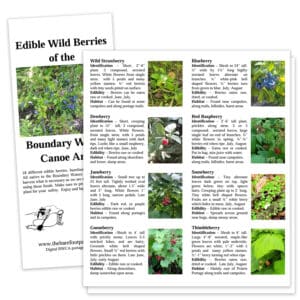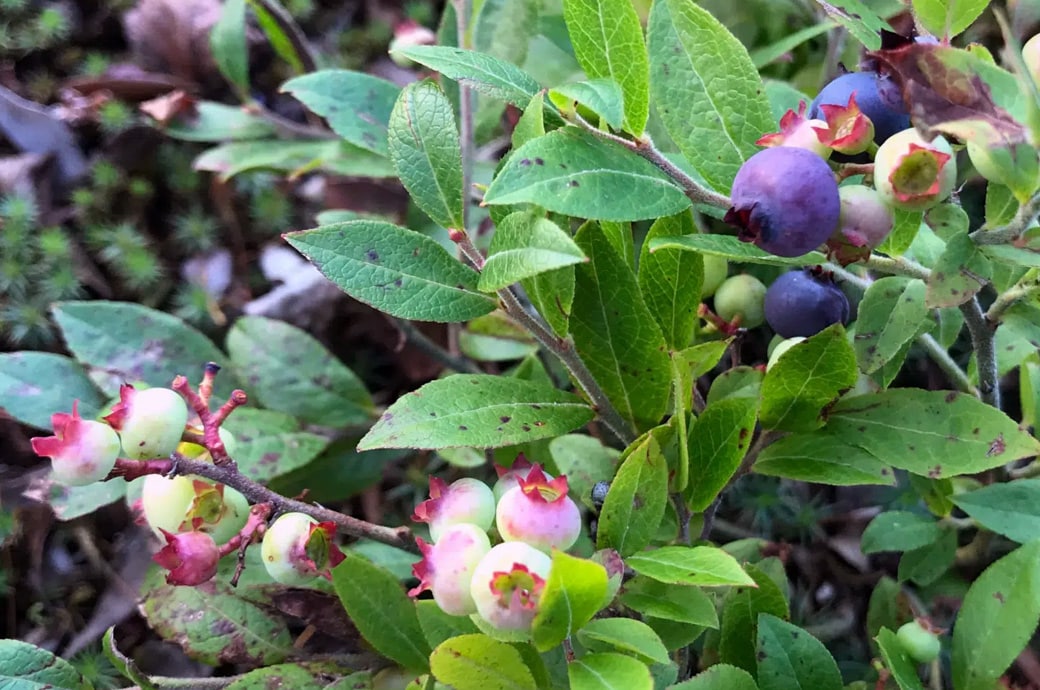
Berry-picking season has arrived! You can find all kinds of berries and mushrooms within the Superior National Forest (SNF). Foraging wild edibles is a highlight of summer adventures, connecting people to the land while adding flavor to camp meals. Additionally, gathering wild foods reminds us of those who have hunted and gathered in the area for thousands of years. As people prepare for their adventures, there are reliable resources along with best practices for foraging in the wilderness.
(Please note: USFS regulations allow foraging of berries and mushrooms strictly for personal use. Gathering flowers or live vegetation is prohibited)
Cultural traditions
Harvesting wild foods in the SNF (including the BWCAW) has been a long-standing practice for thousands of years among the Ojibwe and Dakota people. These activities are integral to their culture and daily life. To survive the harsh climate, they collected, consumed and preserved what was available each season. Even today, the Zagaakwaandagowininiwag (Bois Forte Band of Chippewa), Gichi Onigaming (Grand Portage Band of Lake Superior Chippewa), and Nagaajiwanaang (Fond du Lac Band of Lake Superior Chippewa) maintain strong cultural ties to the forest’s natural resources.
According to the Minnesota Conservation Volunteer, in the past, families would often pick hundreds of pounds of blueberries, cranberries, chokecherries, and other wild fruit, then lay them in the sun to dry. To preserve the food and protect it from wild animals, they stored it in deep pits underground.
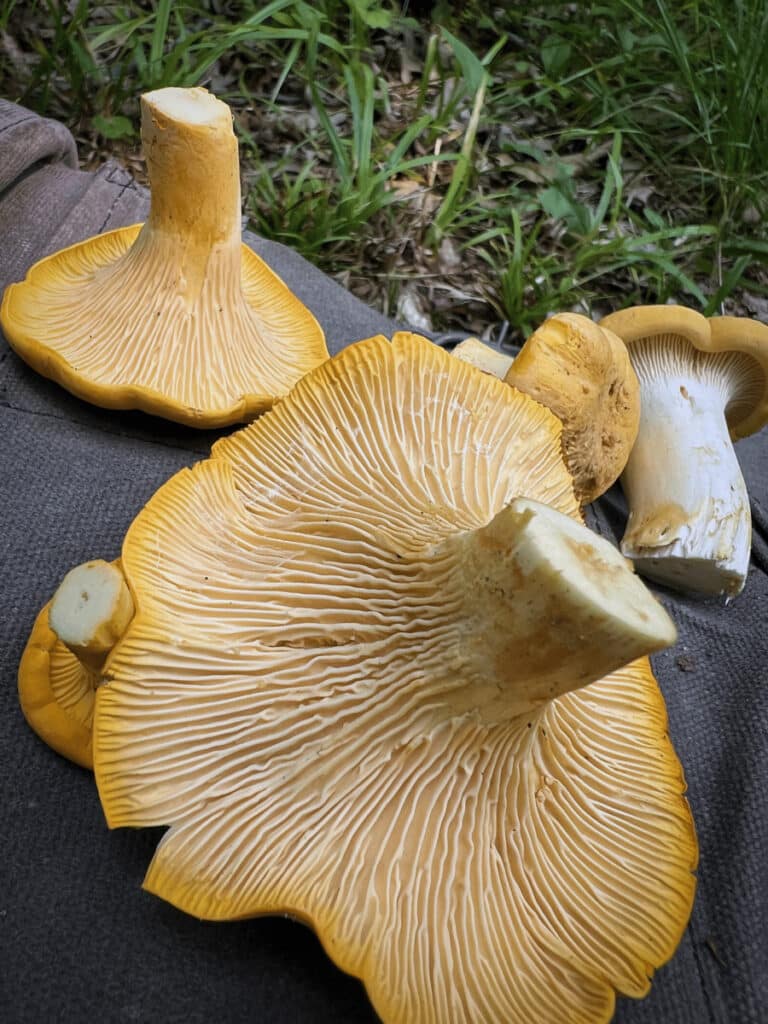
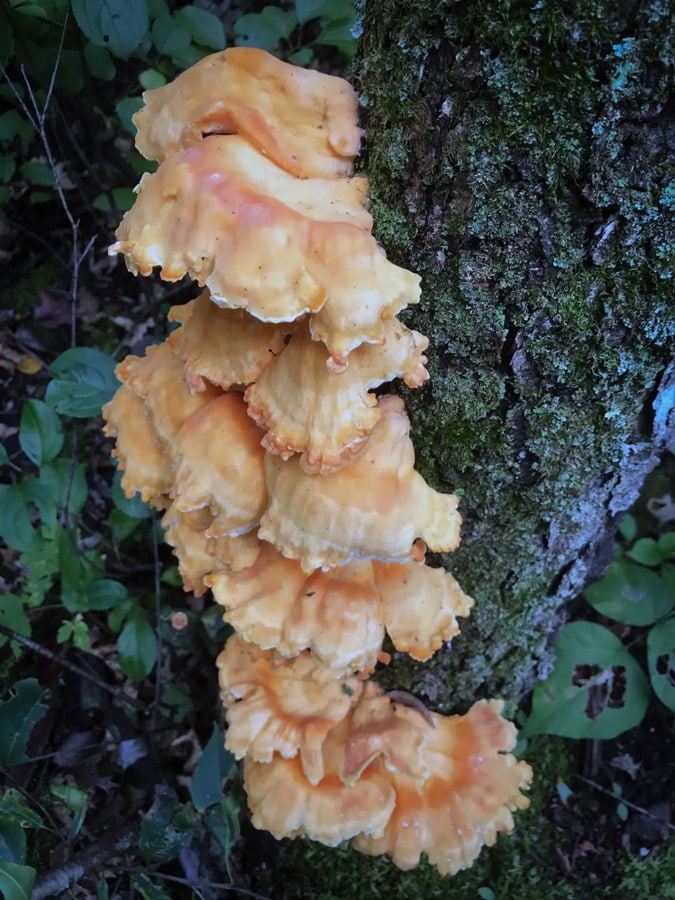
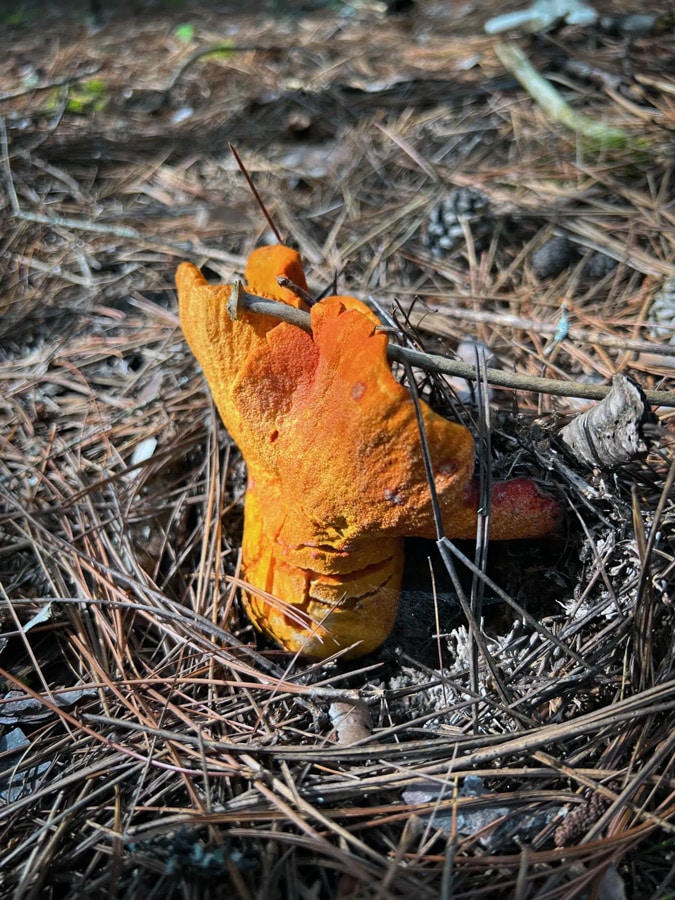
Best seasons to forage
May through September are great months for collecting berries and mushrooms. They add flavor and color to many backcountry meals while connecting us to the wilderness. In his book Field Guide to Edible Wild Plants, expert forager Sam Thayer sheds light on the significance of gathering wild edibles.
“All of us are descended from hunters and gatherers, and we are indebted to our ancestors for our food traditions,“ he remarks. “Our food traditions make us who we are. They define our relationships to land and each other.” (Thayer, 2023, p. 5,12)
After spending multiple summers and hundreds of miles exploring the BWCAW, recreational forager Mark Zimmer published an informative guide on Edible Wild Berries of the Boundary Waters Canoe Area.
Mark usually spends five months of the year exploring the wilderness. Harvesting berries not only enhances the flavor of his meals but also brings him joy as he observes the season unfold. “I enjoy watching these plants grow leaves, flowers, berries and prepare themselves for winter. It’s a pleasure to be a part of it. I use the berries in just about everything I make; wild rice with berries, fish and berries, pancakes with berries, berries added with a granola bar, and of course my favorite – berries with other berries,” he says.
Prime months for berries:
- Strawberries – June into early July
- Thimbleberry – July through late August
- Gooseberries – July into August
- Raspberries – July through August
- Blueberries – Mid-July to mid-August
Prime months for mushrooms:
- Lobster – Late-July through September
- Oyster – April, August through September
- Chanterelles – July through September
- Chicken of the Woods – August to early September
- Boletus – July through September
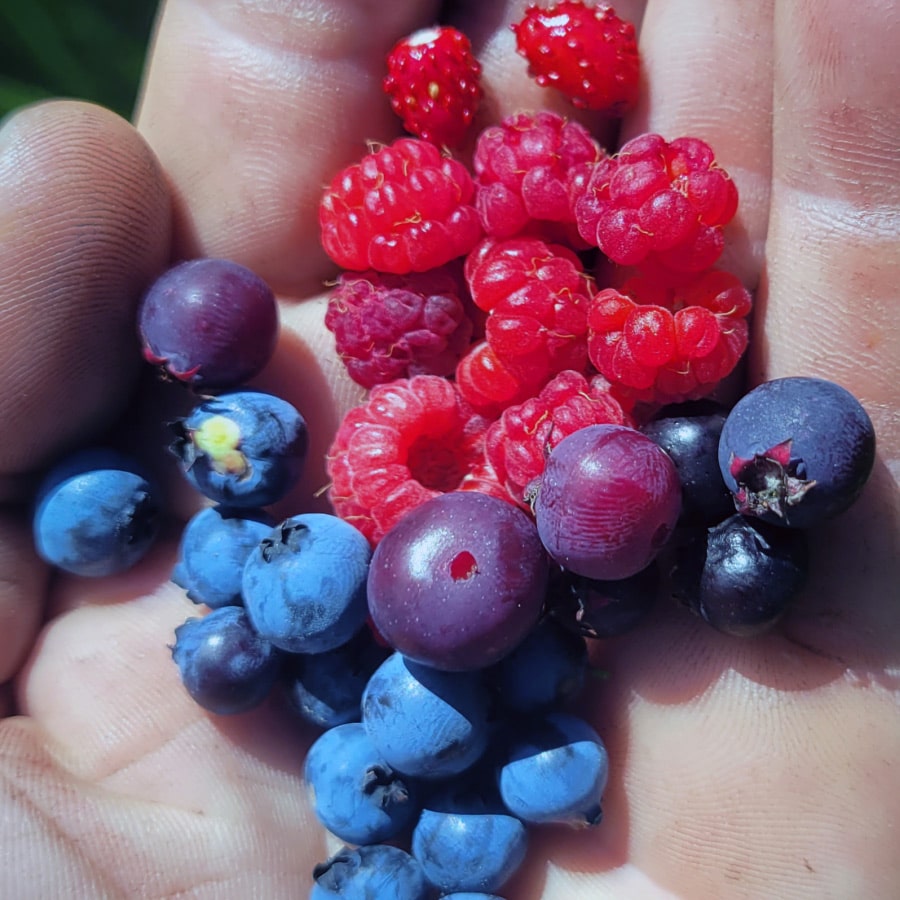
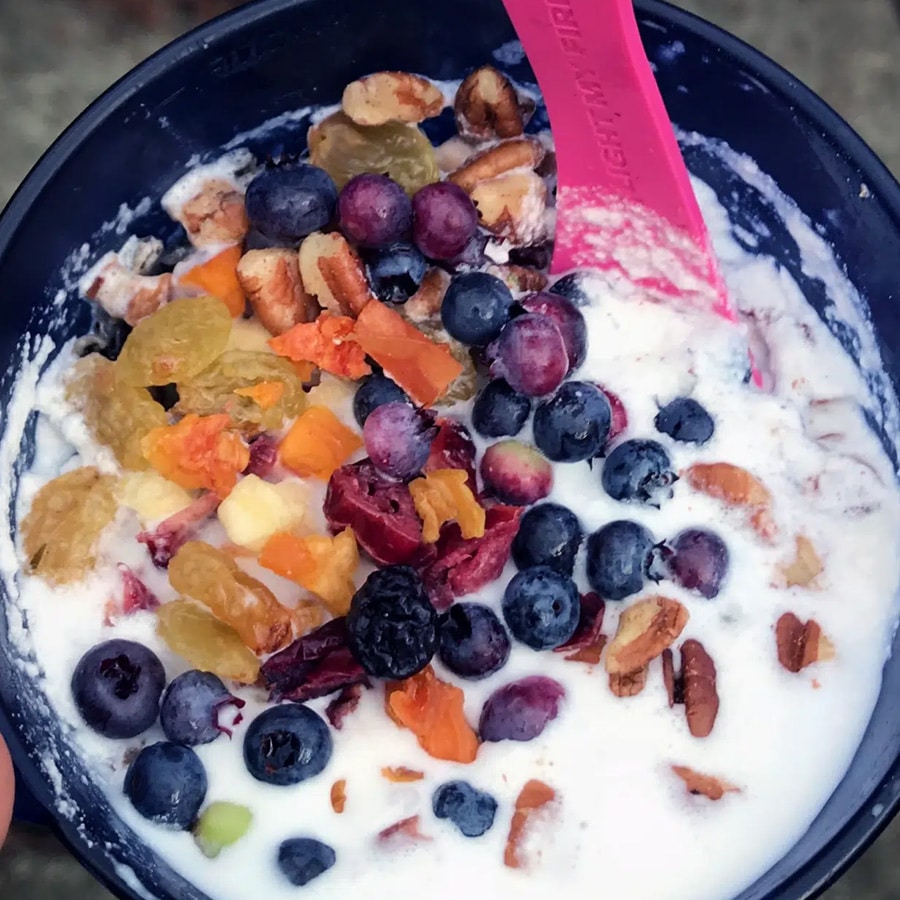
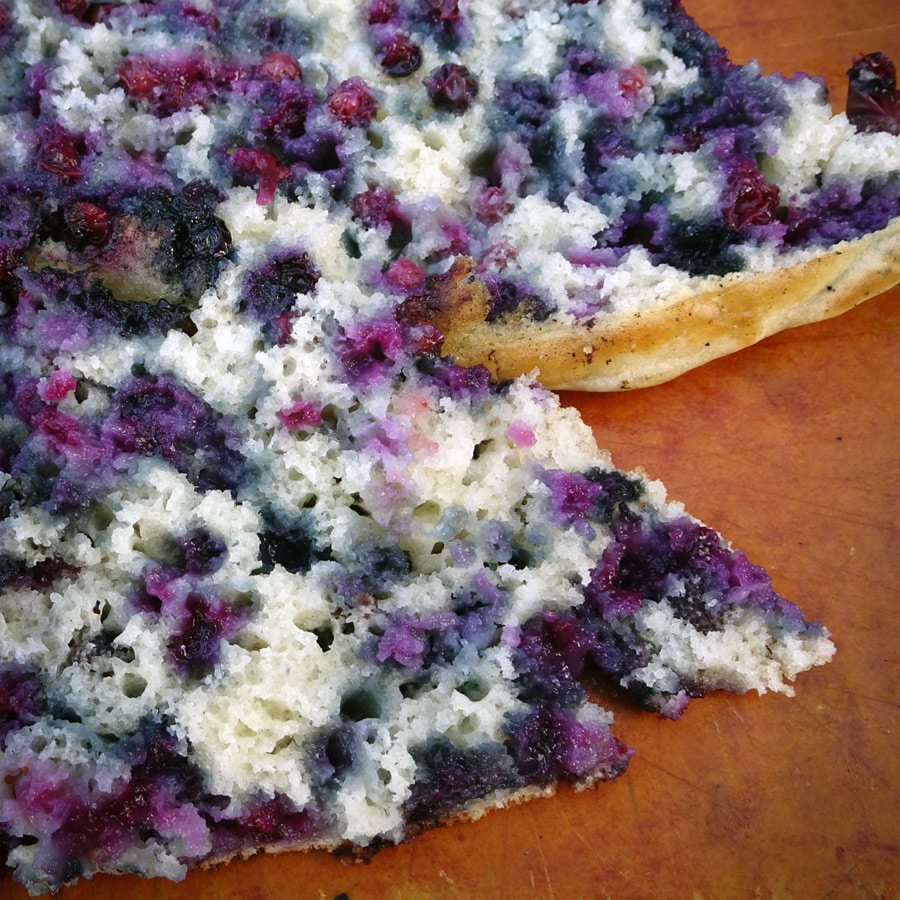
5 tips for picking wild berries and mushrooms
Experts recommend adopting a conservation-focused approach when foraging berries and mushrooms.
- Only collect what you can positively identify, preserve, and consume.
- Leave some berries and mushrooms for the animals and to encourage propagation.
- Stay aware of your surroundings and watch for wildlife. Animals such as bears and wolves eat berries too, so be sure to make your presence known.
- If you are not 100% sure, leave it, don’t eat it. When harvesting mushrooms, research where they grow and any foraging regulations that may be in place. When picking a mushroom, use multiple resources when identifying a wild edible. Be aware of recommended ways to cut or remove mushrooms from where you find them.
- Finally, minimize the impact on the environment and leave natural areas as undisturbed as possible.
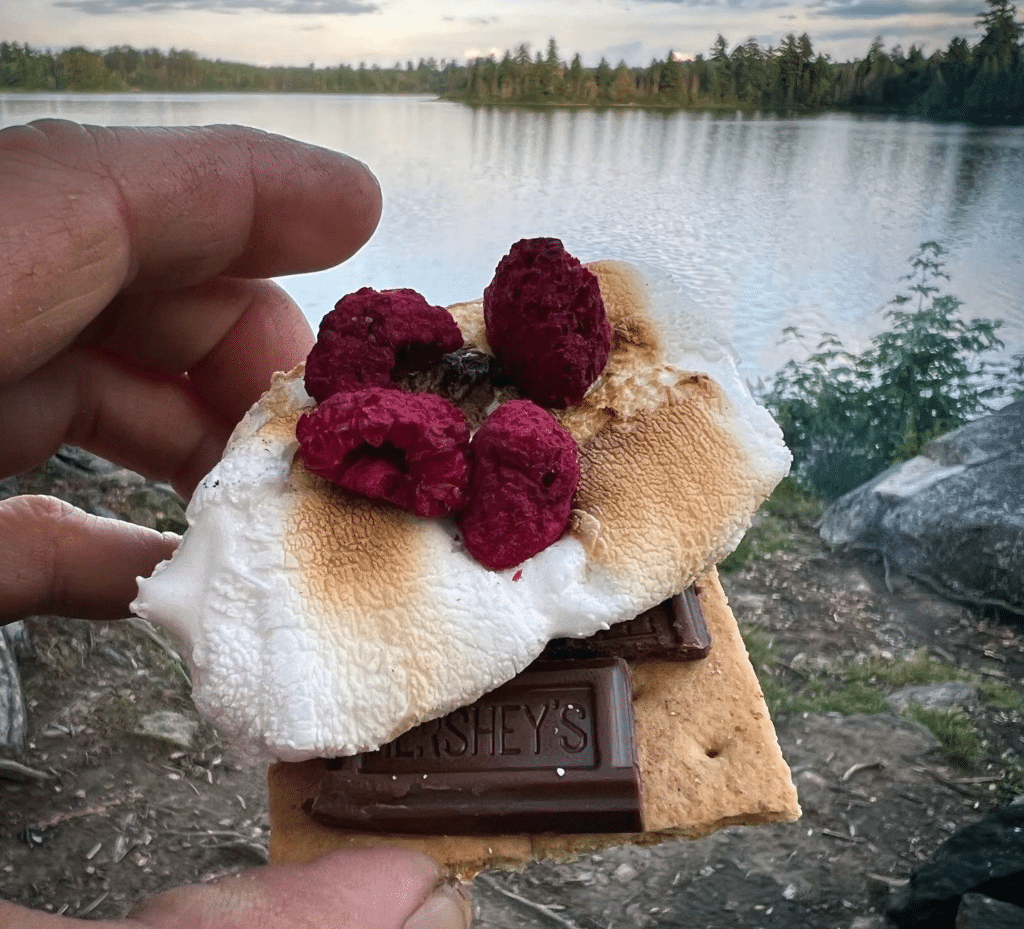
More info:
- Find, pick, and prepare these five delicious Minnesota wild fruits – MNDNR
- Ojibwe lifeways – MNDNR
- Sustainable Mushroom Foraging Practices: Preserving Nature’s Delicate Balance – Minnesota Mycological Society
- Plant identification? There’s an app for that—actually several! – Michigan State University

Wilderness guide and outdoorswoman Pam Wright has been exploring wild places since her youth. Remaining curious, she has navigated remote lakes in Canada by canoe, backpacked some of the highest mountains in the Sierra Nevada, and completed a thru-hike of the Superior Hiking Trail. Her professional roles include working as a wilderness guide in northern Minnesota and providing online education for outdoor enthusiasts.


